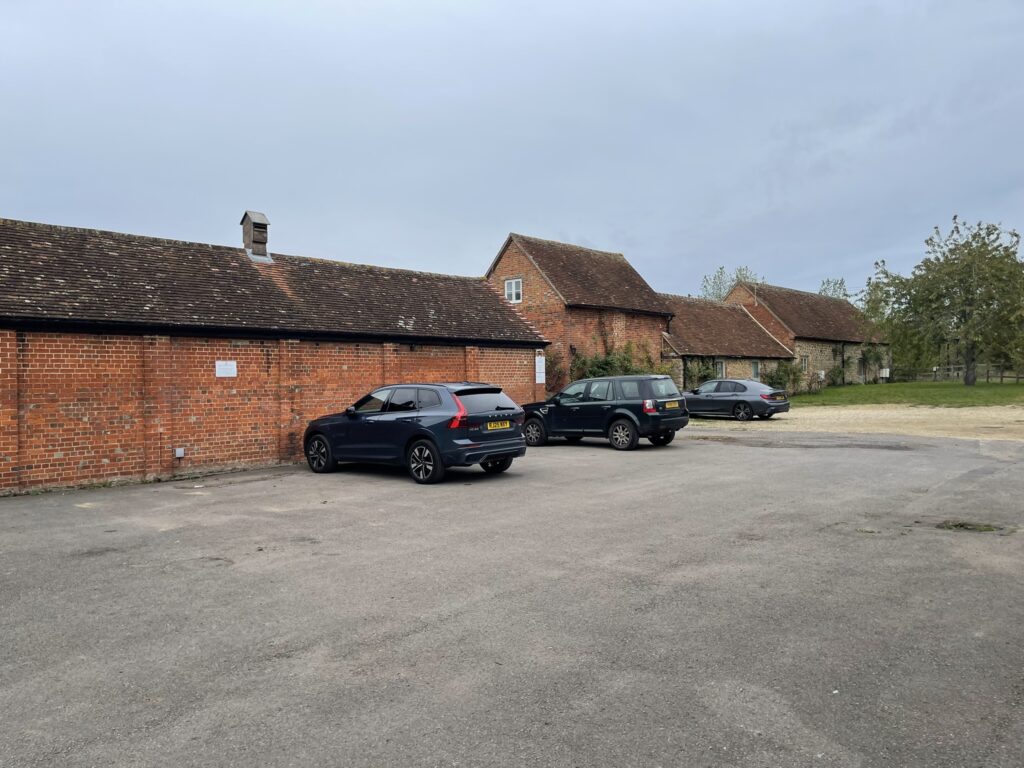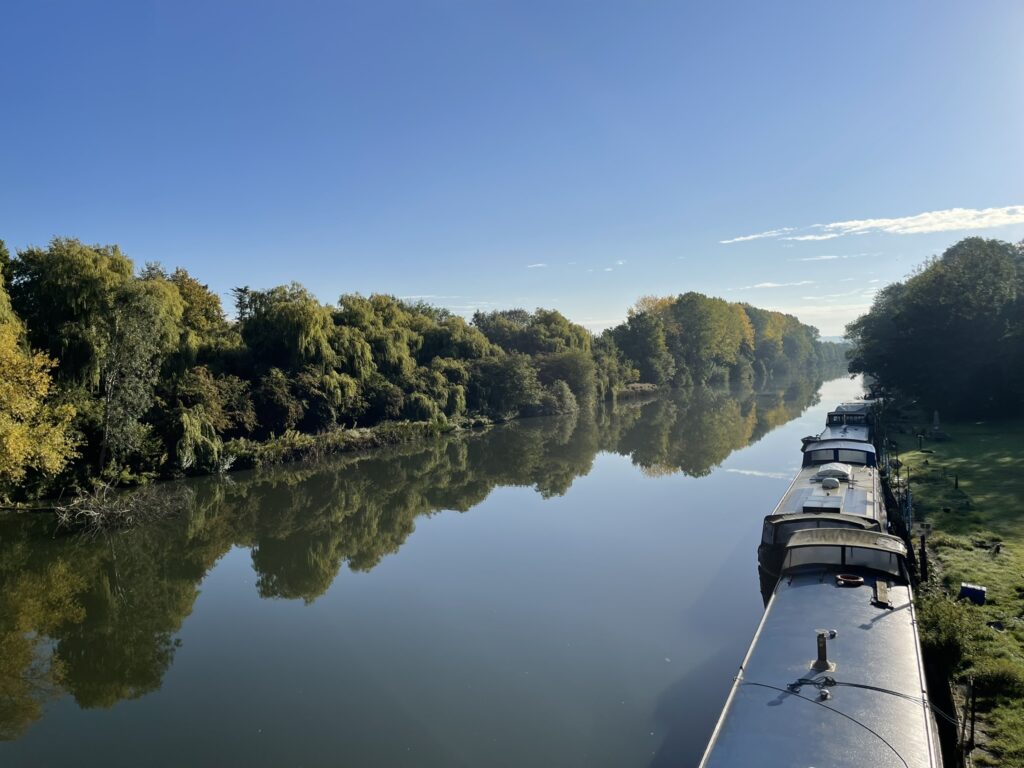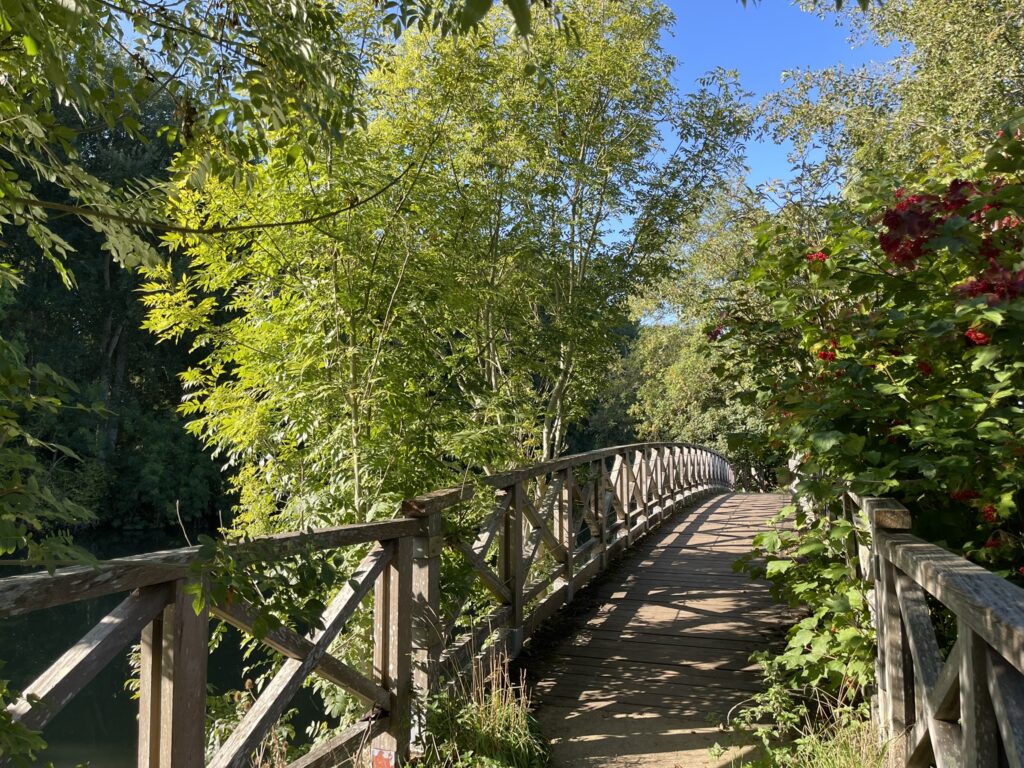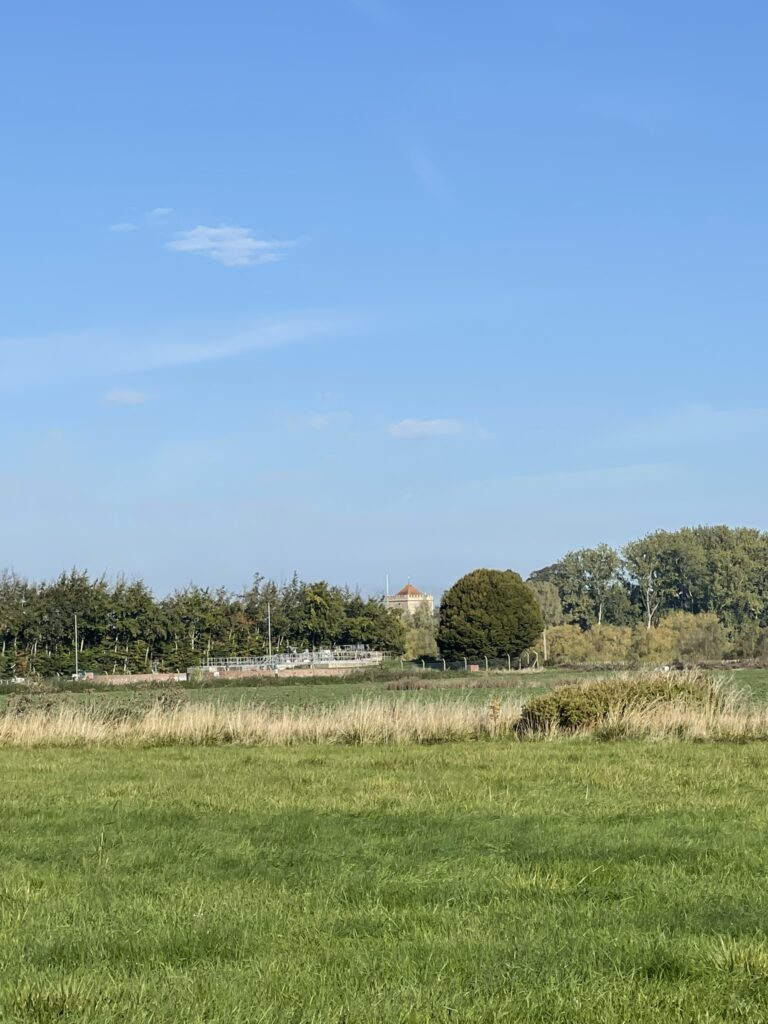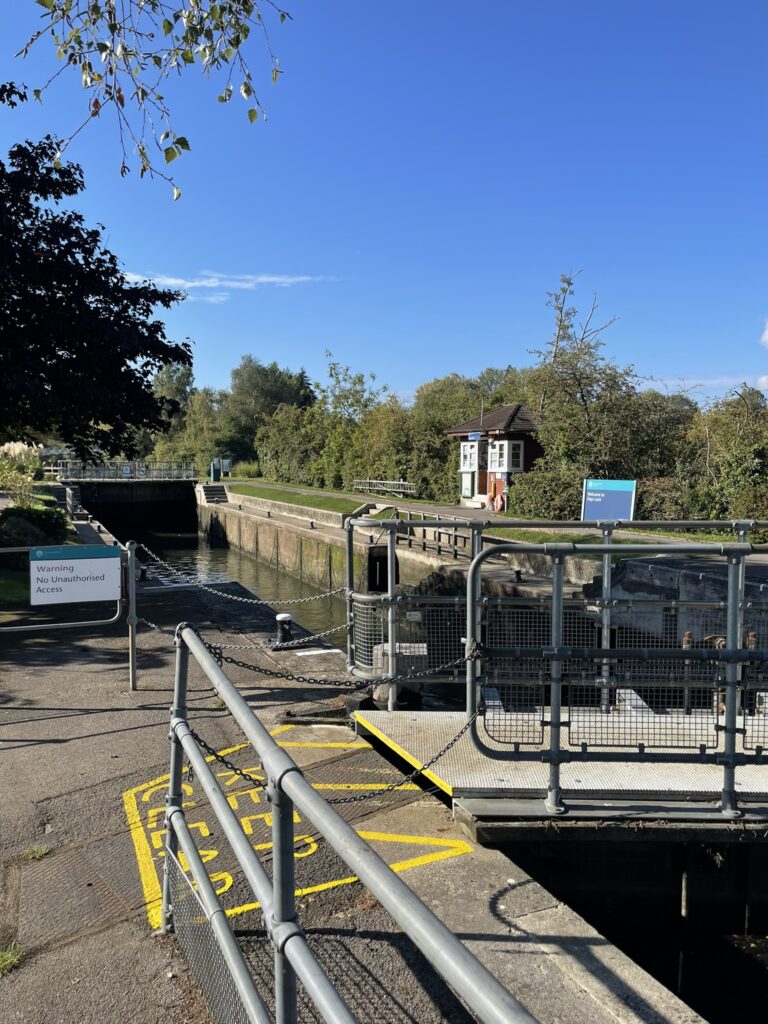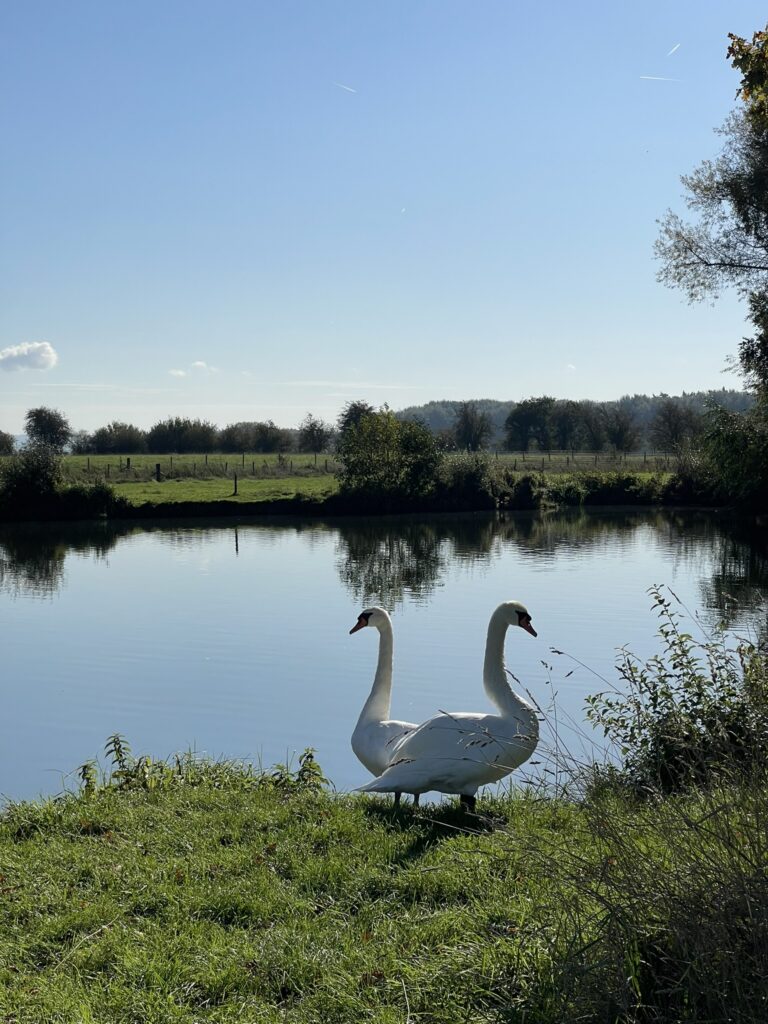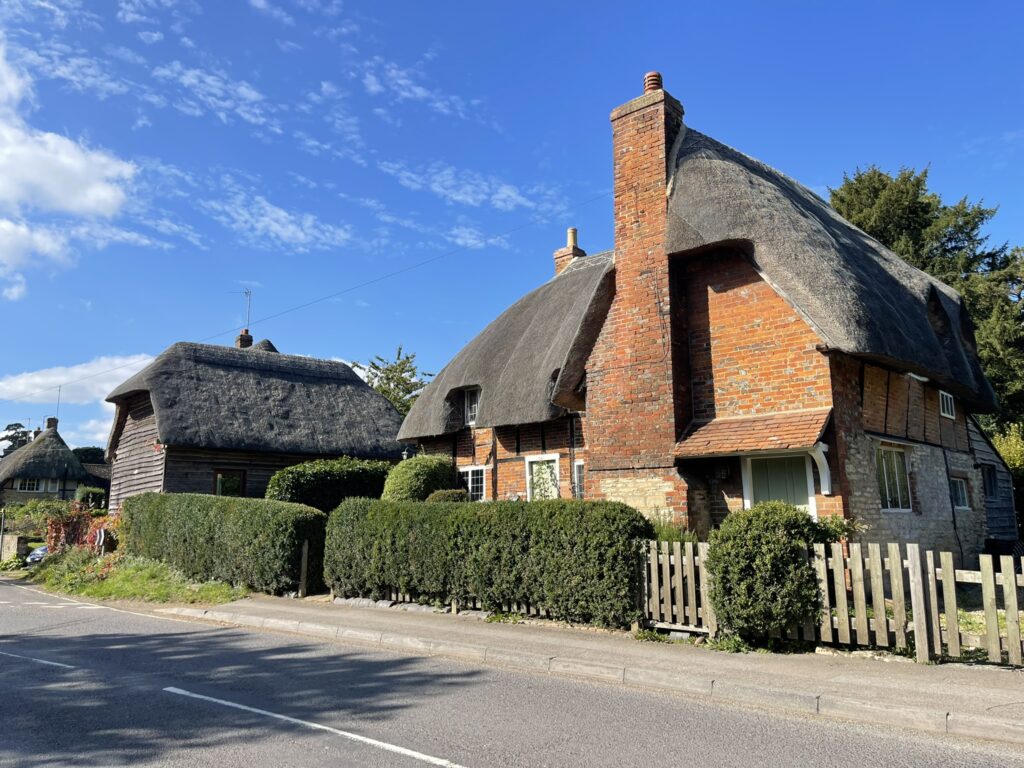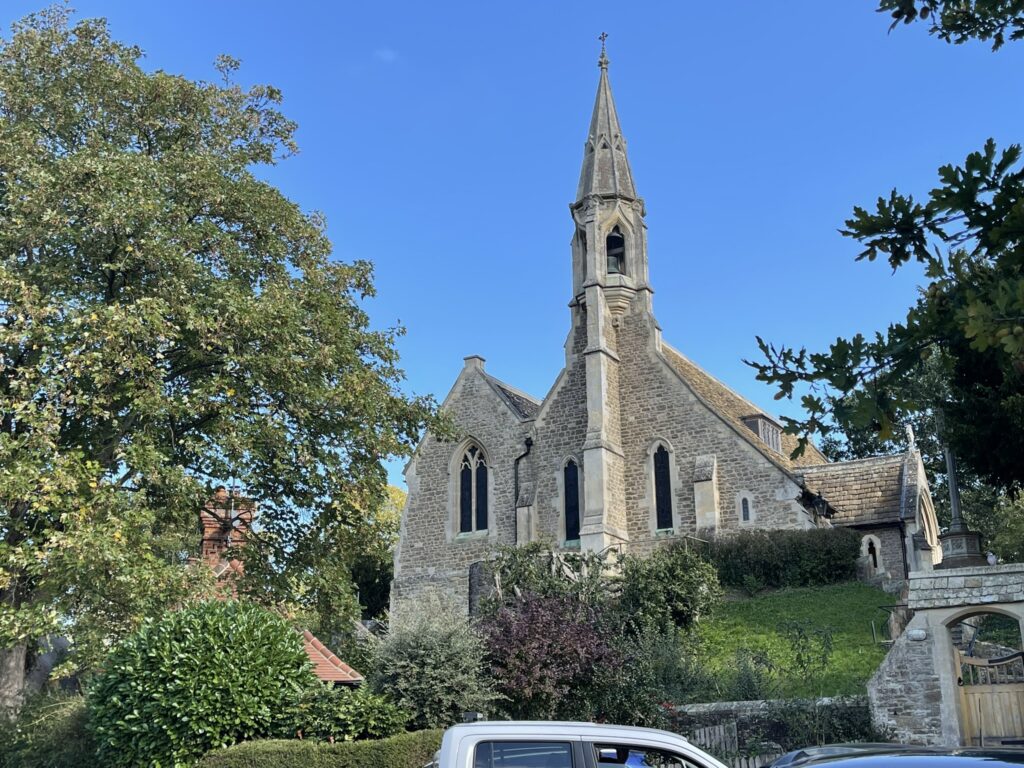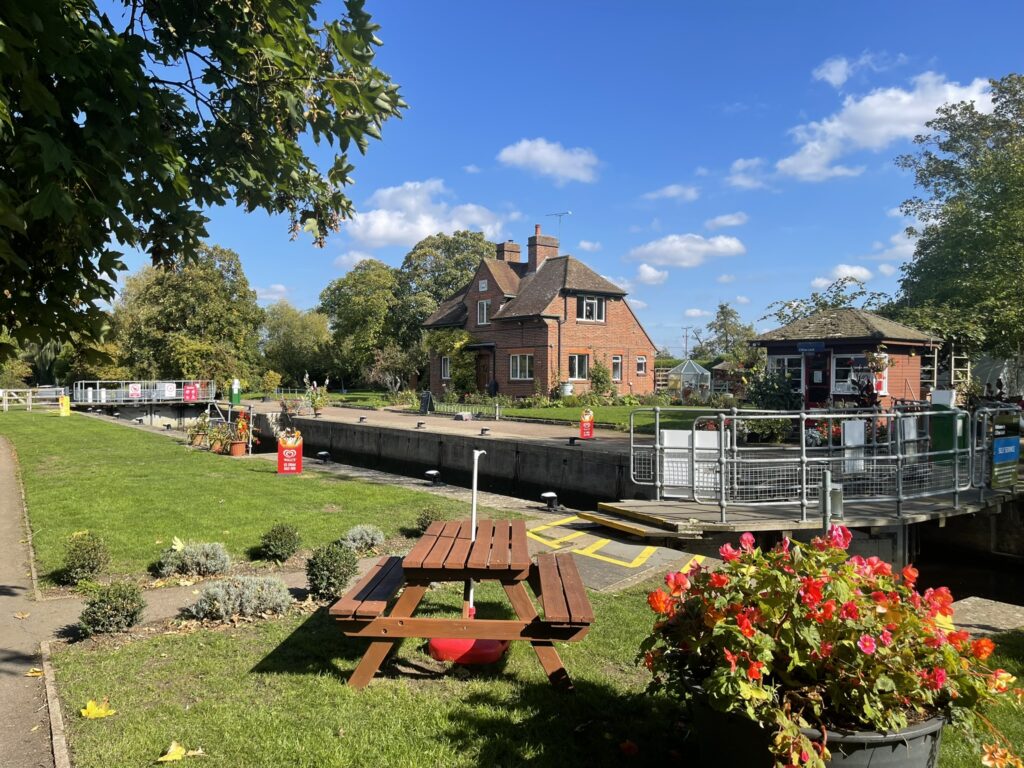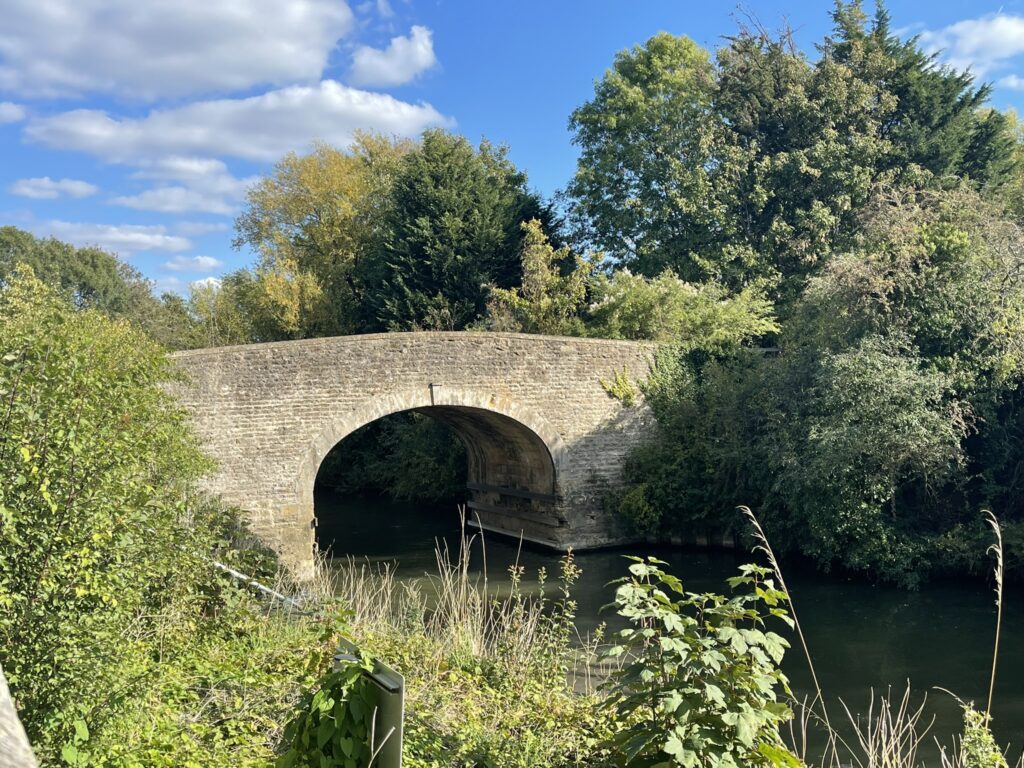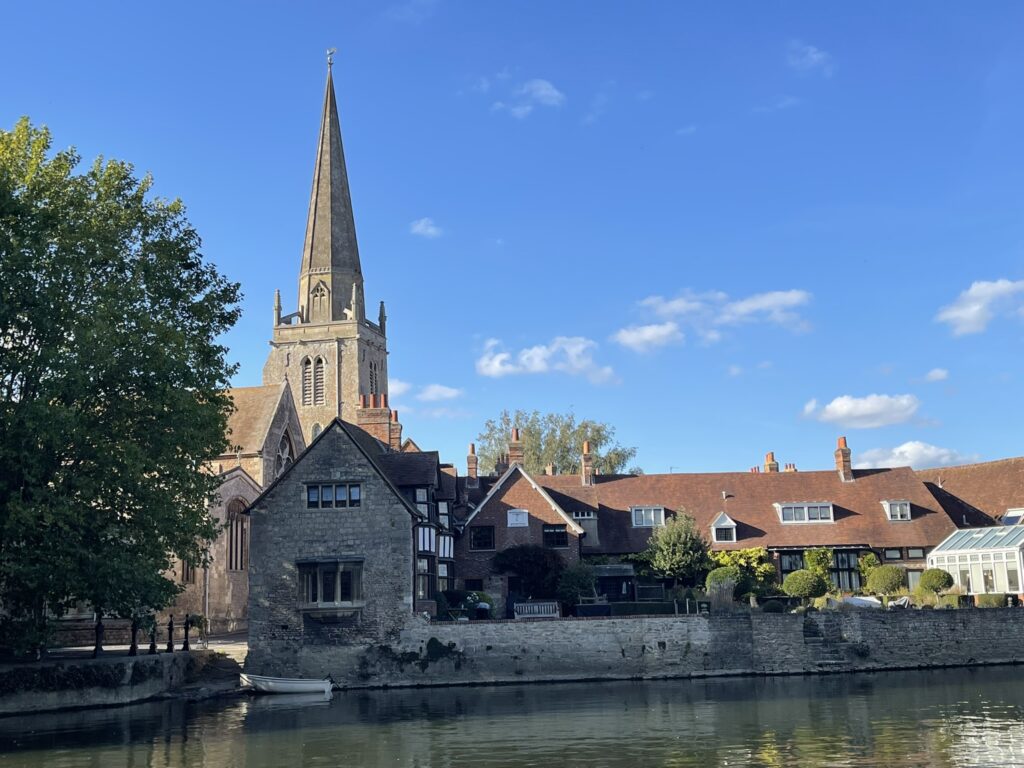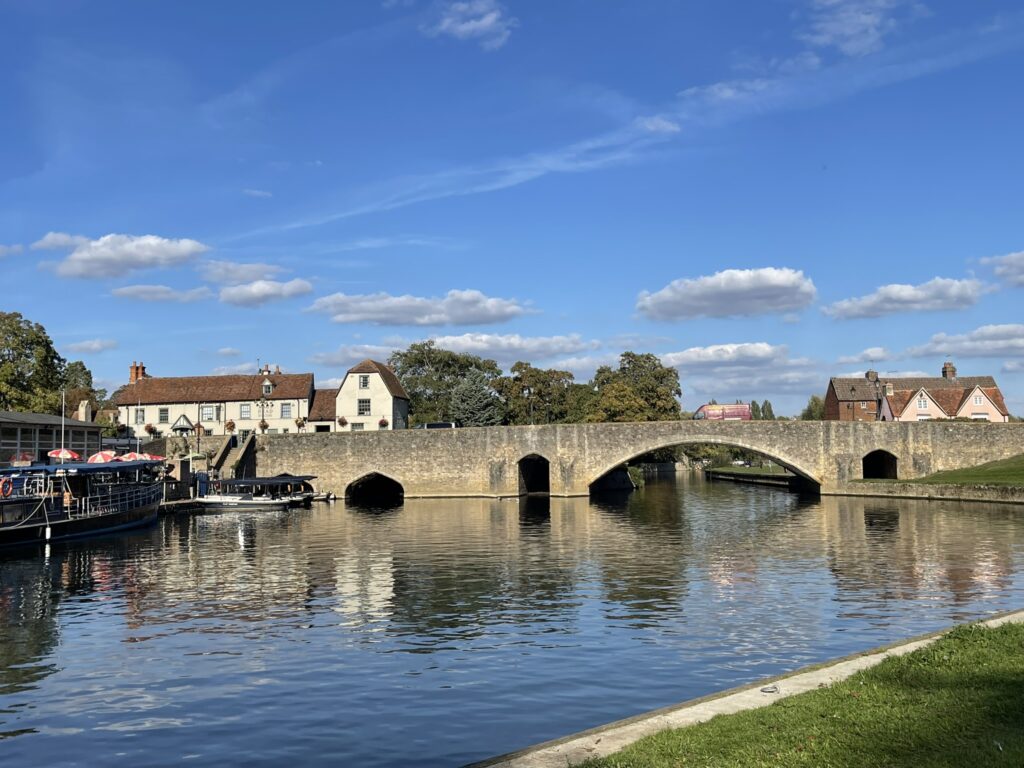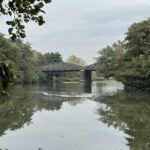Total Distance: 11.1 miles
Time: 5 hours 30 minutes
Points of Interest:
Shillingford Bridge
Dorchester-on-Thames
Little Wittenham Bridge
Day’s lock
Clifton Hampden
St Michael and All Angels church
Clifton Hampden bridge
Clifton Cut
Cllifton Lock
Appleford railway bridge
Culham Lock
St Helen’s Church
Abingdon bridge
At 7:30 AM, I started my day well-rested, despite the previous day’s walk leaving my legs and especially heels aching. With an 11-mile trek to Abingdon ahead, there was no time for delay. I quickly prepared and went downstairs for a substantial breakfast. We were seated in the dog-friendly dining room, and the pleasant staff soon presented me with a full English breakfast, while Cher eagerly devoured a sausage.
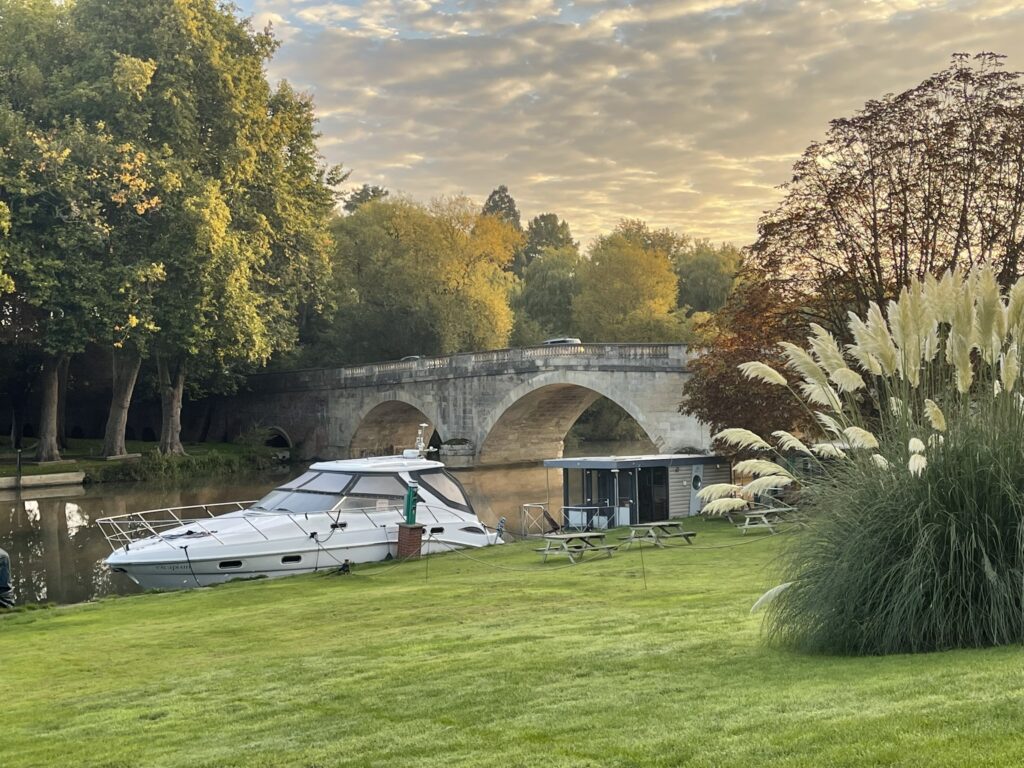
We went back to our room after breakfast, to pack my bag and prepare for the day. It’s been a pleasant stay at the Shillingford Bridge Hotel, great size room, comfortable bed and a nice view of the bridge from the room, highly recommended.
After leaving the hotel at 9:30, we crossed Shillingford Bridge. A bridge has stood on this site since the 14th century, with the present Grade II listed stone bridge, featuring three semi-circular river spans, dating back to 1827. This replaced a previous bridge built in 1767. Initially a toll bridge, tolls were abolished at midnight on November 1, 1874, and the toll-keeper’s cottage was demolished in 1937.
Shillingford Bridge occupies a romantic position, which strikes the eye more strongly from being unlike the rest of the country, which bears an open and dreary aspect.
– The Beauties of England and Wales 1813
The path led us onto the busy Henley Road, which we followed for a bit before crossing and rejoining the river. Despite the early hour, the banks were bustling with anglers, either enjoying the fresh start to the day or escaping their wives.We crossed a bridge where the rivers Thame and Thames meet.
Just a mile inland lies the ancient village of Dorchester-on-Thames, a place I would have like to have visited. However, this would have added two miles to an already challenging walk.
Dorchester was once a significant city, home to a Roman garrison and there are traces of an amphitheatre. Its historical importance is further marked by the arrival of Bishop Birinus in 634, sent by Pope Honorius I to baptise Cynegils, King of Wessex. At that time, Dorchester was the capital of Wessex, which would later become the dominant kingdom in England.
The village’s Abbey, founded in 1140, remarkably survived the Dissolution of the Monasteries. This was due to Sir Richard Bewfforeste, ‘a great riche man’ of Dorchester, paying Henry VIII £140 for the lead on the chancel roof, thereby saving the church for the parish. This stretch of the Thames is so rich in history that I hope to return and explore the area more deeply.
Our journey along the path led us to the charming Little Wittenham Bridge. This footbridge, built in 1865, serves as a link between Little Wittenham and Dorchester. Until 2018, it was a prominent feature in the World Poohsticks Championships, used for the heats and as the setting for the event’s final.
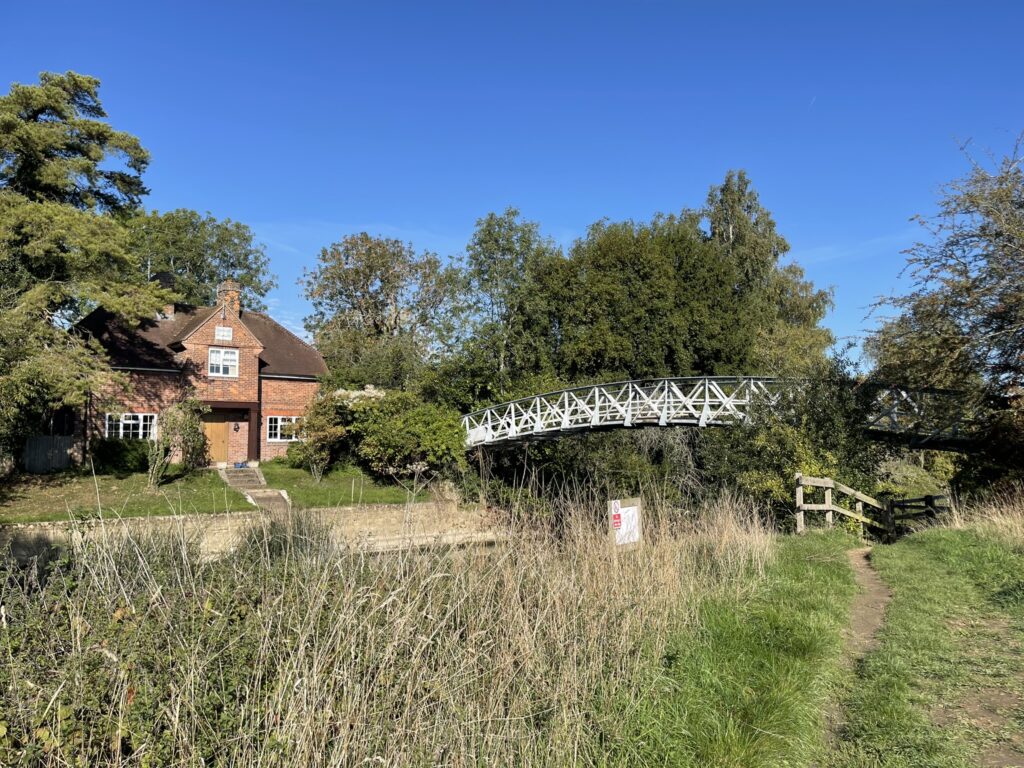
Further along we come to Day’s lock. The name Day’s Lock comes from the Day family, local Catholic yeomen since the 17th century. The current pound lock was built in 1789, and restored in 1865 when it had fell into disrepair. The lock is the main gauging station for the measurement of the water flow in the River Thames.
After crossing over at the weir, we took our first break, enjoying the noisy ducks. A large bend in the river stretched ahead, and while I wished we could cut across the land to save time, I was committed to following the path properly! We walked for another 30 minutes before deciding to rest again, leaning against a fallen tree. Cher was initially hesitant to leave her carrier, fearing she wouldn’t be allowed back in. However, she soon settled, curling up in the grass and almost drifting off to sleep. The setting was incredibly serene; no one else was around, and the gentle sound of the water was the only noise. We were in no rush, spending a good half an hour simply soaking in the tranquil surroundings. I spotted my first kingfisher, it was so quick, but distinctively a kingfisher from its brilliant colouring, swooping to catch its prey from the river before disappearing into the trees.
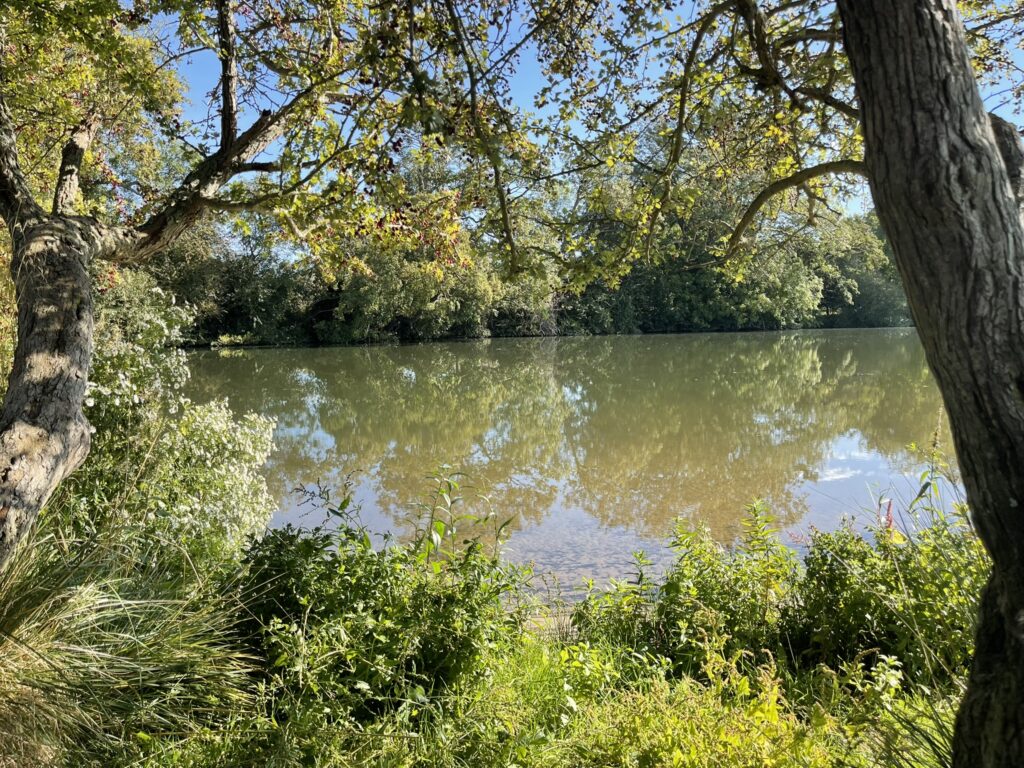
Sadly, our time was limited, so we had to continue our journey along the path through Thomas’s Meadow, heading towards Clifton Hampden. This particular section of the river offers a profound sense of remoteness, a serene escape from the constant hustle and bustle of London. If anything can genuinely improve one’s mental well-being, this tranquil experience is it.
Arriving at Clifton Hampden, we crossed the bridge and entered a village from a bygone era. Virtually all the cottages are thatched and the wonderful St Michael and All Angels church towers over the village. We sat under its shadow for a while to rest and have a few snacks that I had on me. The church has a long history stretching back to Saxon times. Standing on a cliff overlooking the Thames, the oldest remaining elements are the monumental south aisle pillars of the 12th century. The church was rebuilt by the great Victorian architect George Gilbert Scott in the 19th century and is one of his early masterpieces; he went on to design the Albert Memorial and St Pancras Hotel.
“Round Clifton Hampden, itself a wonderfully pretty village, old-fashioned, peaceful, and dainty with flowers, the river scenery is rich and beautiful. If you stay the night on land at Clifton, you cannot do better than put up at the ‘Barley Mow.’”
– Jerome K. Jerome, Three Men in a Boat
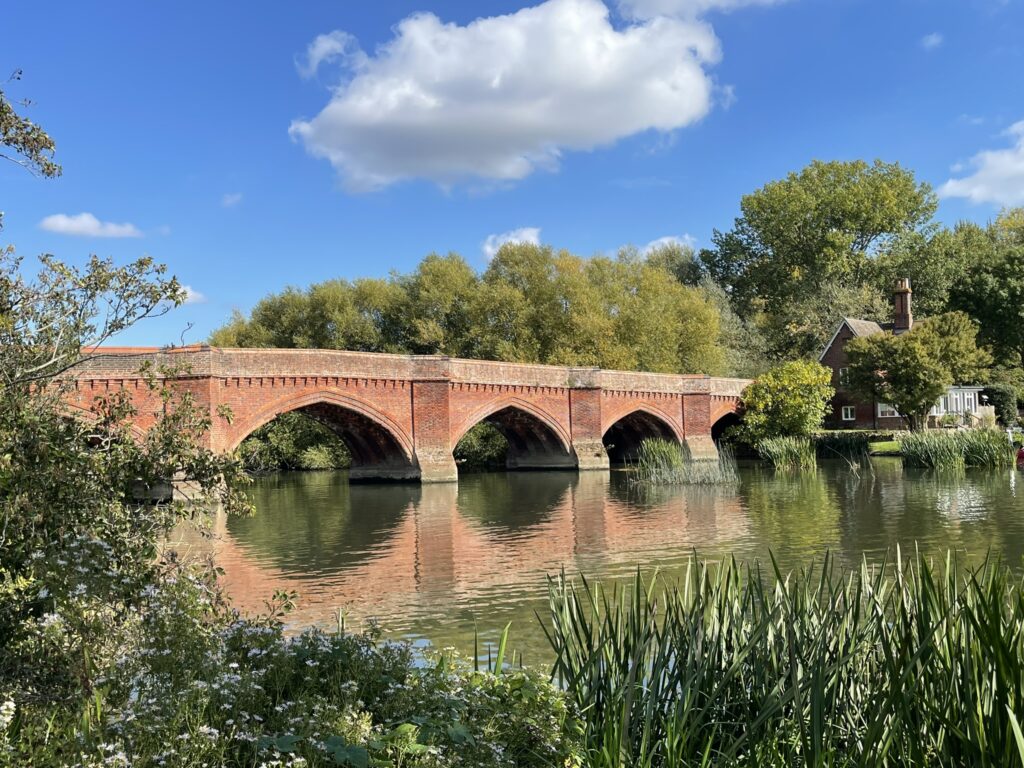
After our rest (and we’d earned plenty today!), we made our way back to the Clifton Hampden bridge and onto the path. The bridge was also designed by Sir George Gilbert Scott and was opened in 1867. The bridge replaced a ferry service which had operated on the site since at least the early 14th century. The bridge almost got demolished in 1931 as part of Berkshire County Council’s policy of replacing toll bridges, but the second world war got in the way and the plans were put on hold.
The path made its way along Clifton Cut, a half mile long cut (created in 1822) that bypasses a shallow and difficult stretch of the river. At the end of the cut is Cllifton Lock. The lock was completed in 1822 and the weir was built 13 years later.
After passing Appleford railway bridge, we lay down in the meadow and took in the sun. We were making good time, and this rest was needed. Cher was tired from being carried, and I was tired from carrying her and my backpack! We didn’t have far to go now so we spent a while just enjoying our time before the final push.
Everything was aching by now, but we continued onto Culham, and to Culham Lock. The lock was built in 1809, along with a stone bridge of just 20 feet (6.1m) to carry a road across the cut.
A sign signified that there was only 1 mile to Abingdon. Nearly there! As we continued, the church of St Helen’s came into view, the church spire being a landmark of the town. It also appears in a painting of around 1806 by J. M. W. Turner called Abingdon. Then finally Abingdon bridge came into view, my final stop for today! I deserved pint, so we fell into the closest pub – The Nags Head, on Nags Head Island, which sits in the middle of the two Abingdon bridges. We rested and ate here before making our way to Kingfisher Barn, our stay for the night. The barn was a short 10 minute walk from the bridge, and was not difficult to find. I had also booked a single for tonight and the room was quite pleasant with all the basic amenities. Coffee, tea, hot chocolate, oh but hang on, there was no kettle, I looked everywhere, but there wasn’t one. Disappointing, as a hot chocolate before bedtime would have been perfect.
After freshening up, we headed back to the Nags head for a couple more well deserved pints. It was a challenging day after the previous days walk, but so relaxing. I would sleep well, once I got used to the single bed!
